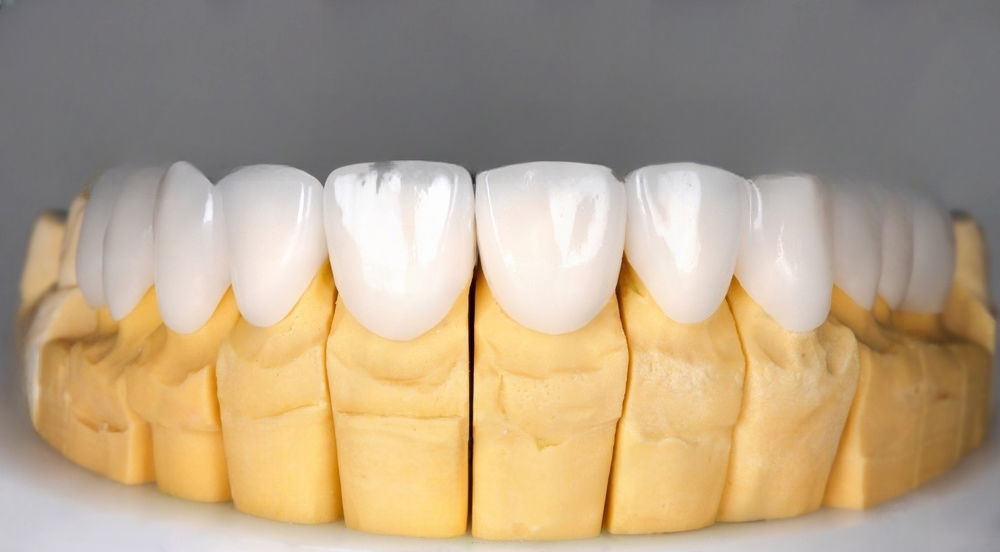Transform Your Smile with Dental Veneers: A Step-by-Step Guide
Dental veneers have become a popular solution for individuals looking to create a flawless, white smile. Veneers are thin, custom-made shells designed to cover the front surface of teeth, enhancing their appearance. They can rectify a variety of dental issues, such as discoloration, worn down or chipped teeth, and uneven spacing or alignment. This guide aims to provide a detailed step-by-step approach for those considering dental veneers to transform their smile.

Understanding Dental Veneers
Before considering dental veneers, it’s essential to understand what they are and whether they’re right for you. Veneers are made from either porcelain or resin composite materials and are permanently bonded to your teeth. Porcelain veneers resist stains better than resin veneers and better mimic the light-reflecting properties of natural teeth. Resin veneers are thinner and may require the removal of less of the tooth surface before placement.
Benefits of Dental Veneers
Veneers offer numerous benefits that go beyond just aesthetics. They provide a natural tooth appearance and are well-tolerated by gum tissue, making them a comfortable choice for long-term wear. Veneers are also known for their durability and strength, often lasting ten to fifteen years with proper care before needing replacement. Additionally, because they are custom-made, they can be matched to the color of your existing teeth, ensuring a uniform look.
1. Consultation and Planning
The first step in the veneer process is a consultation with your dentist. This visit involves discussing your goals and the expected results. Your dentist will examine your teeth to determine if veneers are suitable for you and may take X-rays or make impressions of your mouth and teeth.
2. Tooth Preparation
If you and your dentist decide that veneers are the right choice, the next step is preparing the teeth. This process typically involves removing a small amount of enamel from the tooth surface to allow for the thickness of the veneer. Your dentist will then make a model or impression of your tooth, which is sent to a dental laboratory to construct the veneer.
3. Veneer Fabrication
Creating the veneers can take several weeks, during which you may be given temporary veneers to protect the prepared teeth. The fabrication process involves meticulous craftsmanship to ensure that the veneers fit your teeth perfectly and meet your desired aesthetic.
4. Fitting and Adjustments
Once your permanent veneers are ready, you’ll return to the dentist for a fitting. Your dentist will temporary place the veneers to check their fit and color, making any necessary adjustments. Achieving the perfect fit is critical for both the look and function of your veneers.
5. Bonding
After ensuring an ideal fit, the dentist will apply a special cement to the veneer and place it on your tooth. Once appropriately positioned, the dentist will apply a light beam to the veneer, which activates chemicals in the cement to harden it quickly.

Caring for Your Veneers
To ensure the longevity of your veneers, adopting a consistent oral hygiene routine is essential. This includes regular brushing with a non-abrasive toothpaste, flossing, and visiting your dentist for check-ups and cleanings. While veneers are stain-resistant, it’s advisable to avoid stain-causing foods and drinks like red wine, coffee, and tea, as well as smoking.
Potential Risks and Complications
As with any dental procedure, there are potential risks associated with veneers. Though uncommon, these can include sensitivity to hot and cold temperatures after the enamel is removed, possible damage to the underlying tooth, and the risk of veneers chipping or falling off. Discuss these risks with your dentist to make an informed decision.
Cost Considerations
The cost of dental veneers varies depending on factors such as the number of veneers you require, your location, and the expertise of the dentist performing the procedure. It’s important to remember that most insurance plans do not cover the cost of veneers as they are considered cosmetic. However, many dental offices offer financing options to help manage the expenses.
Choosing the Right Dentist
Selecting a dentist who has experience and expertise in veneers is crucial. Look for dental professionals who have an extensive portfolio of before-and-after veneer cases, good reviews or testimonials from previous patients, and who are willing to discuss the procedure in detail with you.
In Conclusion
Dental veneers can dramatically transform your smile, boosting both your appearance and confidence. By following the steps outlined in this guide and working closely with your dentist, you will be on your way to achieving the beautiful smile you’ve always desired. Remember that thorough research, understanding the procedure, and proper care are vital components of the veneer process, ensuring you enjoy your new smile for many years to come.
While this guide provides an overview of the process, each individual's experience with dental veneers can vary, and there may be additional steps or considerations depending on your unique situation. Always consult with a qualified dental professional to get personalized advice and to answer any questions you may have regarding veneers or any other cosmetic dental procedures.